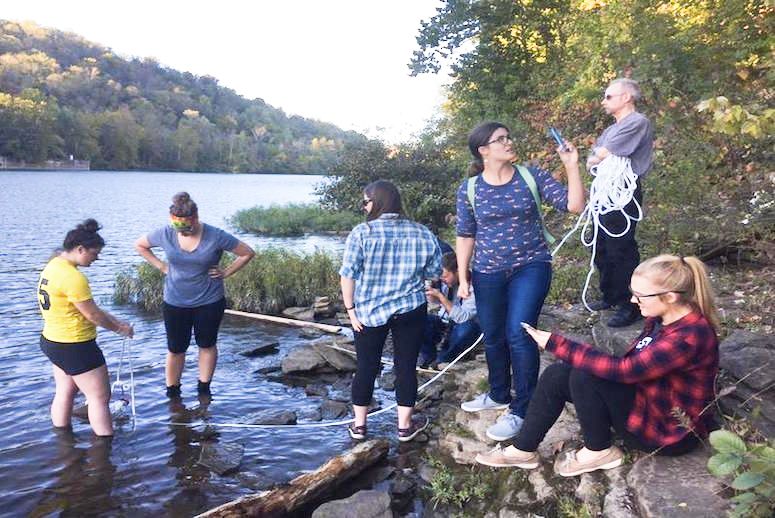PREVENTING THE NEXT FLINT WITH TECHNOLOGY YOU CAN MAKE AT HOME
 How do we know the water flowing from our taps is safe and free from contaminants? For the most part, we trust that regulators and inspectors have done their jobs, and we likely don’t think about it much. We just fill our glasses, take our showers, and brush our toddlers’ teeth. But then Flint happens, or the 2014 Elk River spill in West Virginia that left 300,000 people in nine counties without water for weeks.
How do we know the water flowing from our taps is safe and free from contaminants? For the most part, we trust that regulators and inspectors have done their jobs, and we likely don’t think about it much. We just fill our glasses, take our showers, and brush our toddlers’ teeth. But then Flint happens, or the 2014 Elk River spill in West Virginia that left 300,000 people in nine counties without water for weeks.
In West Virginia, a group of students, ecologists, and public radio journalists have hatched a DIY pilot project they hope will keep another Flint or Elk River from happening. They placed six simple, low-cost sensors—developed by Public Lab and the MIT Media Lab—in the Monongahela River to show that ordinary citizens can collect and interpret water-quality data in real time. The open-sourced project is called Stream Lab, and it’s designed so any community can replicate it and create its own early-warning detection system.
Advertisement
“We were able to prove that this works—that we could successfully measure changes in river-water conductivity with some DIY electronics in a Gatorade bottle,” said John Keefe, data news editor at WNYC, “and we did it for a fraction of the cost of professional-grade devices.”
While research scientists may deploy sensing equipment that costs thousands of dollars, the Riffle sensor designed by MIT’s Don Blair runs about $100. The sensor, which consists of a capacitor, a resistor, and a speaker on a small circuit board, can be assembled at home by following the step-by-step instructions available on Public Lab’s site.
“Residents and journalists wishing to monitor changes in their local river or stream water can actually do it now and in several locations,” said Keefe.
By measuring conductivity, the sensors give a good sense of the levels of dissolved foreign solids in the water. Such data won’t tell you what is in the water, only that something is there that shouldn’t be. The Stream Lab sensors took readings six times per hour and transmitted data wirelessly. During the project, no significant spikes in conductivity were noted in the river, but Stream Lab showed that data collected could be valuable to nonspecialists and scientists alike.
“The more people who are nonscientists, regular citizens, are involved and taking initiative to know what’s happening in their community, the less likely a bad mistake will happen,” said Todd Petty, a professor of wildlife and ecology at West Virginia University and a Stream Lab adviser. “If a city knows that its citizenry are keeping track of their water, they are going to make sure they’re paying attention too.”
Stream Lab will soon roll out a guide to explain how to use the sensors and present the data collected during the project, said Dave Mistich, digital editor at West Virginia Public Broadcasting.
“This is sort of a punk rock, citizen science approach,” said Mistich. “If people are interested in putting this in a creek in their backyard to see if something comes through, you can replicate it with just a little coding and a hobbyist level of electronics.”
Someday we may be able to see real-time water-quality readings on our smartphones, said Petty, but that’s still likely a long way off.
“Water crises happen and there’s a flurry of interest, but the data feed has been a limiting factor,” he said. “The only way to get past this is tech advances. We know how to measure water quality, but what we don’t have is economically feasible ways to get large data sets. We need to put this technology in the hands of as many people as possible and expand it in as many places as possible.”







Follow Us!